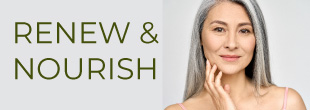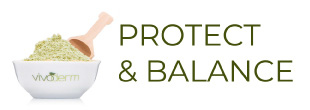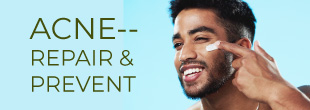Skin Care Advice for Your Big Event
Get Your Skin Ready for Your Wedding, Graduation or Other Major Event
Everyone – guests and those who will be in the public eye — wants their skin to look its best on their big day. Here are some simple tips you can follow to help avoid skin problems on your special day:
- Acne or Rosacea Skin:
Plan ahead: if you have a skin condition like acne or rosacea, see a dermatologist at least 3-4 months ahead of the big day (and sooner, if possible), so that your condition can be brought under control and so that your skin can heal up in time for the occasion. Check out www.AcneGuide.ca or www.RosaceaGuide.ca for treatment information. - Wrinkles, Unwanted Hair or Sweating:
Are you thinking of having treatments like Botox® (for frown lines, or to control excessive sweating), fillers like Restylane™, Juvederm™ and Artecoll™ for wrinkles, creases and scars, or laser treatments for unwanted hair or to remove broken blood vessels from the face? You should aim to have these treatments completed about 3 weeks before the event, so that the benefits of treatment will have fully developed, and so that any side effects of treatment like redness or small bruises will have resolved. Discuss the plans and timing with your dermatologist so that these things can be taken into account when scheduling your treatments. (Read more about Botox®) - New Cosmetics:
If you want to experiment with cosmetics, you should do so well in advance, to reduce the risk that an allergic or irritant reaction will interfere with your enjoyment of the event. - Sun Tanning:
Sun protection is important in the weeks leading up to an important event, to reduce the risk that you will have sunburn or peeling on the big day. It is also important to avoid experimenting with tanning beds in the weeks leading up to a major event, in case you have an undesired reaction to the UV light. - Self-Tanning:
Self-tanning creams and spray-on tans should not be used for the first time within three weeks of a major event, in case there is an allergic reaction or an unusual or uneven color is created. If you want to use such products, start to experiment with them several months ahead so that you can learn how to obtain safe, reliable results. Remember that the pigment created by many self-tanning products can discolor fine clothing, so it might be best not to apply them within a week of a public event.
What if there is a dermatological emergency like a flare-up of acne or an allergic reaction on the face in the days before a wedding, graduation or other important day? Fortunately, many of these problems can be helped by modern medical treatments. Your doctor may be able to arrange a high priority appointment with a dermatologist if they explain that there is an important event coming up – most of us, and most of our staff have been through these things ourselves and we are very sympathetic.
Dr. Kevin Smith is a dermatologist in Niagara Falls, Ontario with a particular interest in protecting the skin and in correcting skin problems resulting from aging, rosacea and sun damage. He is an expert in the use of Botox®, fillers, lasers and intense pulsed light to maintain and enhance the appearance of the skin, and have lectured on those subjects across North America, and in Europe, Asia and Mexico. Read more at www.smithlaser.com




